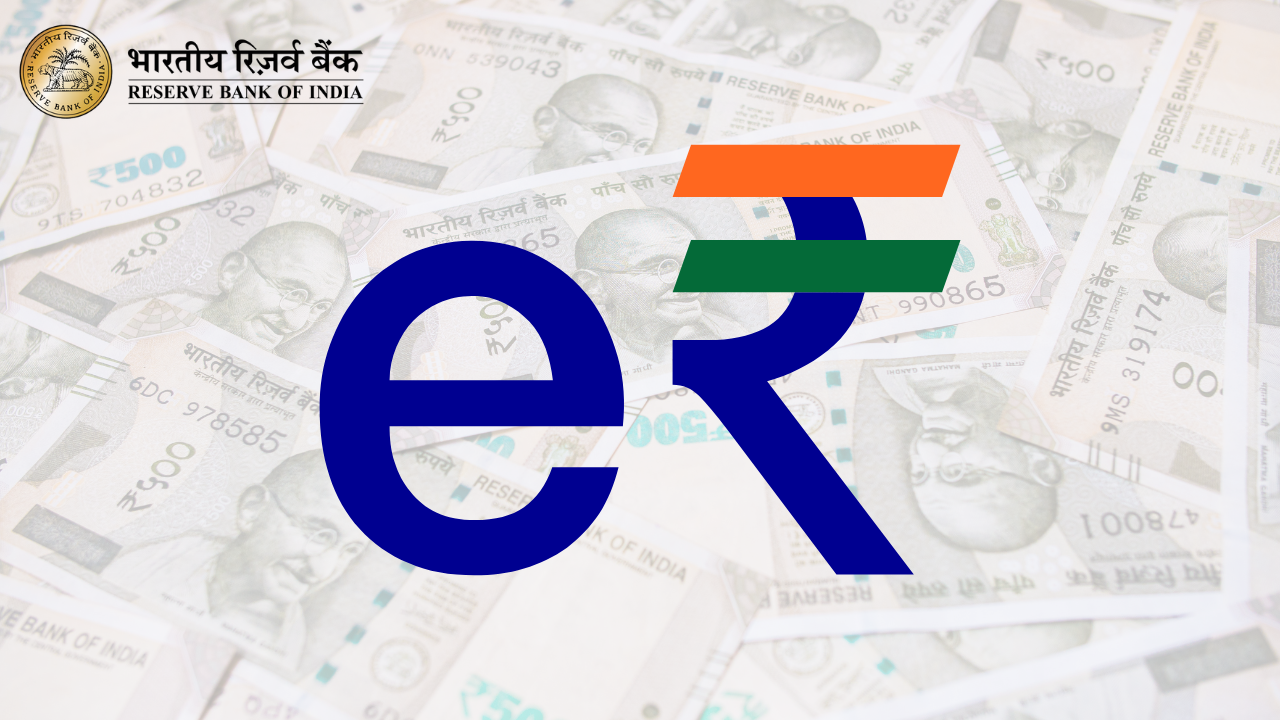In the rapidly evolving landscape of digital payments, the Reserve Bank of India (RBI) has launched a pilot program for its ambitious Central Bank Digital Currency (CBDC) project, the e-Rupee (e₹-R). This groundbreaking initiative is poised to reshape the way India transacts, and major players like Google Pay and PhonePe are vying for a front-row seat.
Let’s delve deeper into what the e-Rupee entails, its implications, and why these payment giants are eager to participate.
What is the e-Rupee?
e-Rupee, also known as the Digital Rupee or Central Bank Digital Currency (CBDC), is a digital form of India’s physical currency, the rupee, issued and regulated by the RBI. It is designed to work alongside the physical currency and digital payment systems like UPI. It functions as a legal tender backed by the full faith and credit of the central bank.
Unlike digital wallets or UPI transactions, where the money is transferred from one bank account to another, the e-Rupee operates as a direct claim on the central bank, much like physical cash. This unique characteristic makes the e-Rupee a powerful tool for promoting financial inclusion and reducing the dependency on cash.

Key Features of the E-Rupee
- Legal Tender: Just like physical cash, it’s accepted for all payments, public and private.
- Centralized: Issued and regulated by the RBI, ensuring trust and stability.
- Digital: Exists purely in electronic form, offering convenience and accessibility.
- Secure: Built on robust blockchain technology, safeguarding against fraud and counterfeiting.
How e-Rupee Differs from Cryptocurrencies and Digital Payments
It’s essential to understand the distinction between the e-Rupee and other digital currencies like Bitcoin or Ethereum. While cryptocurrencies are decentralized and operate on blockchain technology without central authority oversight, the e-Rupee is a centralized currency issued and controlled by the RBI. This centralization ensures stability and trust, as the government backs the e-Rupee and retains a fixed value against the physical Indian Rupee.
Additionally, the e-Rupee is designed to coexist with existing digital payment systems like UPI. While UPI transactions involve transferring money between bank accounts, the e-Rupee operates as digital cash, allowing users to hold and transfer value without needing a bank account.
Why are Google Pay and PhonePe Interested?
Google Pay and PhonePe, two of India’s largest digital payment platforms, are keen to join the RBI’s digital rupee project. Their interest stems from the potential to integrate e-Rupee into their existing platforms, offering users a more versatile payment option. The move would not only enhance their service offerings but also align with the government’s vision of a cashless economy. Let’s explore their motivations in more detail:
- Reduced Transaction Costs: The e-rupee eliminates the need for intermediaries like banks in transactions, potentially reducing processing fees.
- Enhanced Efficiency: Transactions are settled instantly, improving the speed and efficiency of payments.
- Financial Inclusion: The e-rupee can reach the unbanked and underbanked population, expanding their access to financial services.
- Innovation and Growth: The e-rupee opens up new avenues for innovation, enabling these companies to develop novel products and services.
- Competitive Edge: Being early adopters can give them a competitive advantage in the digital payments landscape.
The Broader Implications of e-Rupee
The e-rupee has the potential to revolutionize the Indian economy in several ways:
- Boost to Digital Payments: It can accelerate the adoption of digital payments, reducing reliance on cash.
- Curbing Black Money: The digital nature of the e-rupee makes it traceable, potentially curbing illicit activities.
- Improved Monetary Policy: The RBI gains better control over the money supply and its circulation.
- Cross-Border Payments: The e-rupee could streamline cross-border transactions, making them faster and cheaper.
While the e-rupee pilot is still in its early stages, it holds immense promise. The participation of major players like Google Pay and PhonePe underscores its potential. However, several challenges remain, including technological infrastructure, user adoption, and regulatory frameworks. The RBI is working closely with stakeholders to address these challenges and ensure a smooth rollout.
Conclusion
The e-rupee represents a bold step towards a digital future. With its potential to transform the payments landscape, it’s no wonder that Google Pay, PhonePe, and other industry leaders are eager to join the RBI’s digital rupee project. The journey has just begun, and the e-rupee is set to play a pivotal role in shaping the future of finance in India.

